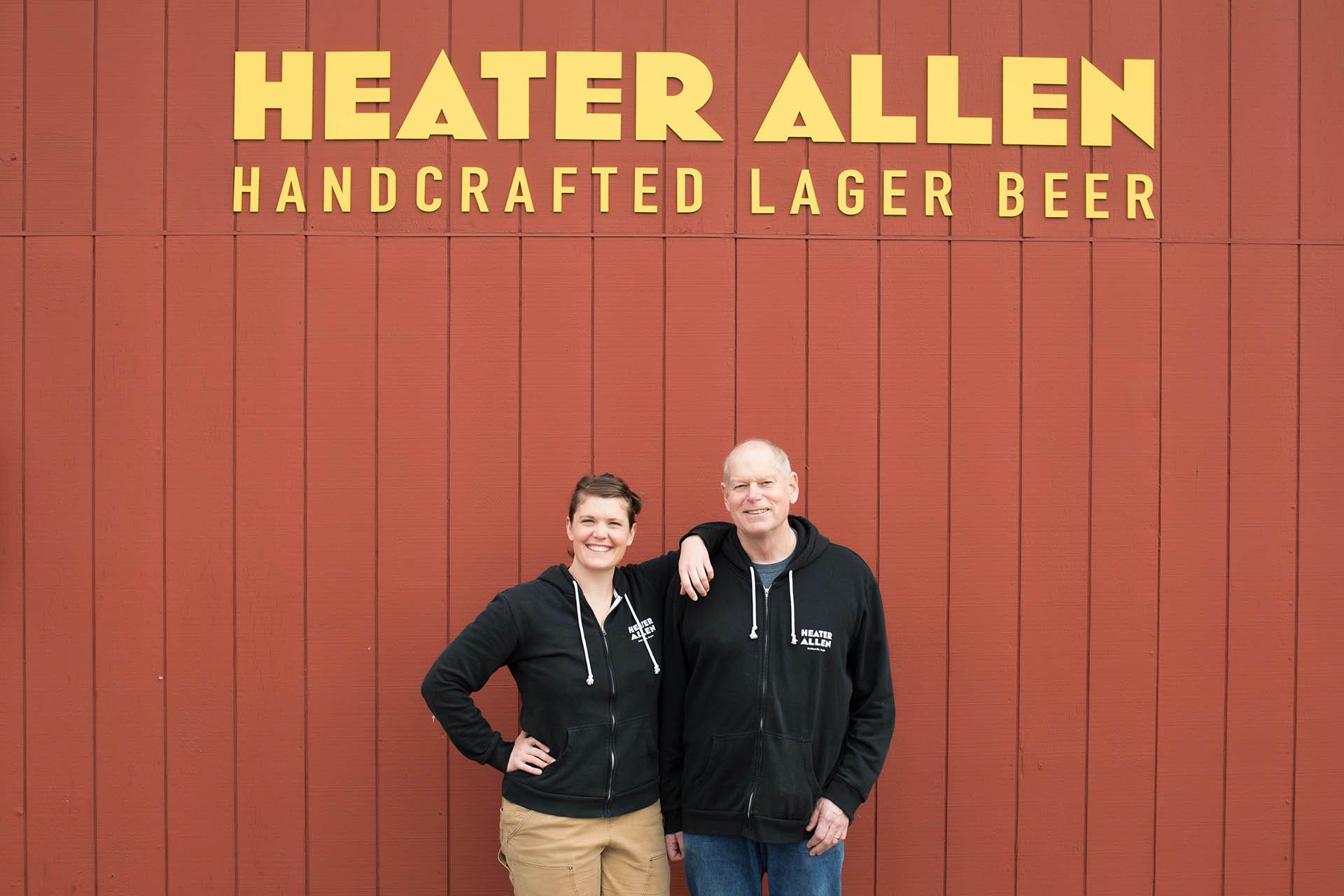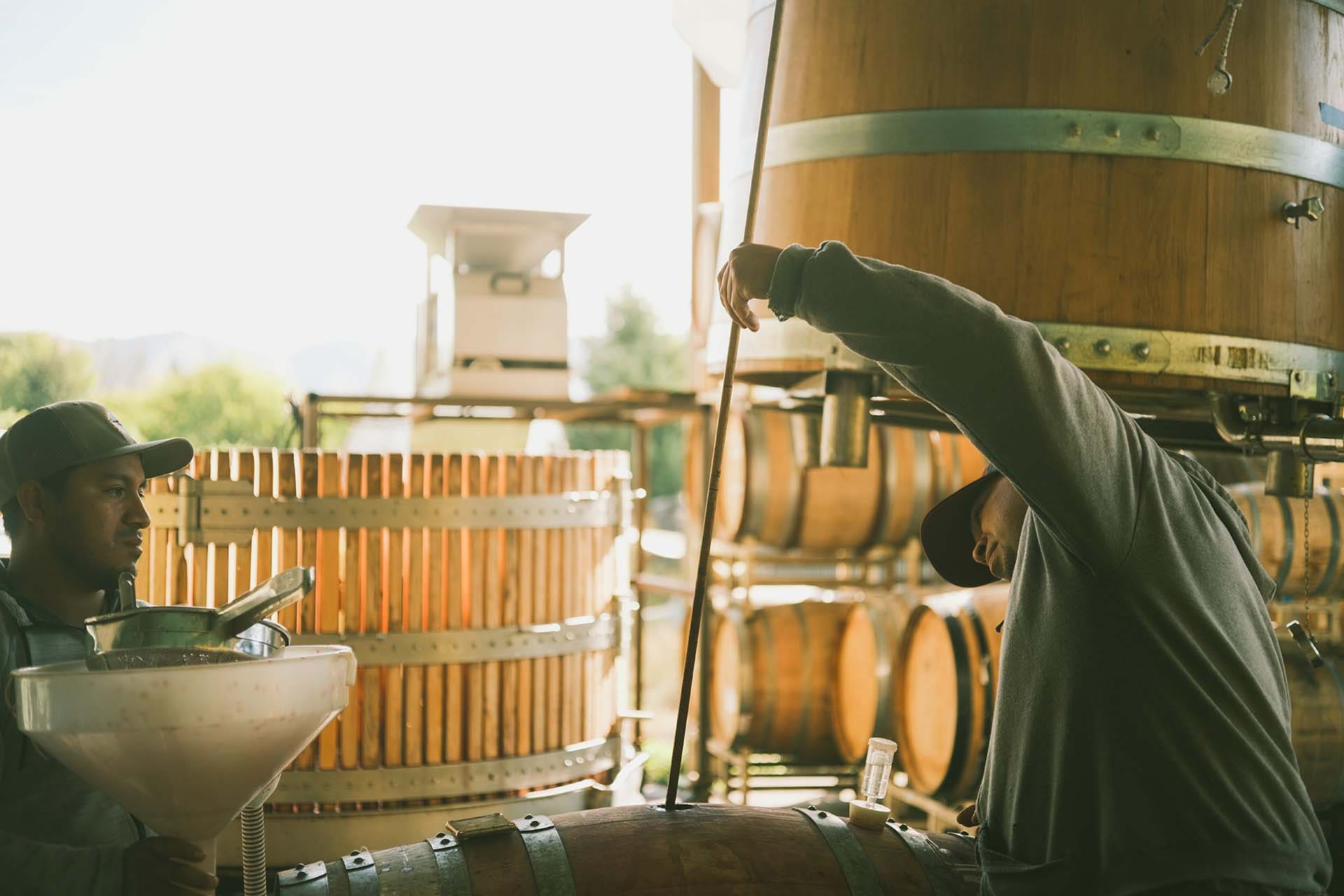Wine Enthusiast |
- Making of Two 100-Point Lagers: Tradition, Patience, Fate and Ingenuity
- Unions, Labor Rights and the Future of Winery Workers
- What Is Lillet and Why Do Bartenders Love It So Much?
| Making of Two 100-Point Lagers: Tradition, Patience, Fate and Ingenuity Posted: 13 May 2021 05:00 AM PDT  A great lager starts to reveal itself at the end of the first glass, and again at the start of the second. This ubiquitous style of beer is dominant around the world. There's a reason why we reach for them with regularity at ballparks, bars, backyard barbecues or beaches. Refreshing and crisp, lagers rely heavily on malts for body and flavor, but they count on hops for a touch of spice or whimsy. The style has dominated the America beer scene since at least the 1870s, says Tom Acitelli, author of Pilsner: How the Beer of Kings Changed the World (Chicago Review Press, 2020). "That’s due in large part to the wave of German immigration in the decades right before," says Acitelli. "These millions of arrivals brought a taste for lagers versus ales, and many of them created lager-producing juggernauts that cornered the beer market and still dominate U.S. brewing today.” In recent years, U.S. craft brewers have turned to lagers in droves. They're eager to convince customers to support local brews, but they also want to drink more lagers themselves. "The greatest trick 'big beer' ever pulled was to make you believe that off flavors in their beers, or inappropriate packaging like clear or green glass, is all part of the lager 'experience,' " says Melissa Cole, author of The Little Book of Lager (Hardie Grant Books, 2020) and a pub owner. "It isn't, and it shouldn't be. "Personally, I don't think lager is a style, I see it as a process, and the more people understand the lengths to which brewers of high-quality lagered beers go to ensure a great end product, the more I think they'll appreciate them," she says. "Lagering a beer takes time. It's a longer and frequently more expensive process than producing something like an IPA, requiring the beer to be dropped to very low temperatures for a number of weeks so the yeast can do its thing and clean up the beer after fermentation, and that can apply to numerous styles from a simple Pilsner to a Baltic porter, and a bunch of others like schwarzbier and Vienna lager in between."
While pastry stouts, smoothie sours and boozy IPAs might rule Instagram feeds, brewers are more than likely to end a workday with a tall glass of lager. Once upon a time, it might have been Pabst or Coors Banquet in their fridges, but soon enough, most brewers want to make their own, and then strive for perfection. Wine Enthusiast received more than 300 lagers for blind tasting and review so far in 2021. Many were stunning, ranked highly and worthy of praise. But two beers scored a perfect 100. The Heater Allen Pils from Heater Allen Brewing in McMinnville, Oregon, and Volksbier, a Vienna Lager from Wibby Brewing in Longmont, Colorado, share the spotlight. Each are rooted in tradition with tweaks that make them stand just a bit taller than others.  These were the first 100-point scores awarded to beers in the magazine's history. Lisa Allen is the head brewer at Heater Allen, a brewery her father started in 2007. She says the Pilsner was originally an homage to legendary Czech standout Pilsner Urquell. Heater Allen's version leans a little heavier on malt and has a touch more hop character. It's, as I wrote in the tasting notes, "at once pillowy soft and assertively crisp," with a toasted, bready character balanced by a spicy hop note. Lagered for at least eight weeks and unfiltered, it's a beer to enjoy in multiples.  The current version of Wibby Volksbier was born from a mistake, says brewer Ryan Wibby. Its grain supplier sent a different kind of Caramunich malt than what's usually used for the recipe. Wibby says they decided to use the darker, richer malt anyway. The result was a revelation, and the revamped version began to sell quickly. It racked up awards like a gold medal at the 2020 Great American Beer Festival.
These lagers were a delight. They showcase the ingenuity of American brewers and their drive to strive for perfection and deep flavor. With more lagers from small breweries debuting every day, there's a chance for beer lovers to taste something familiar from their own neighborhood. "And just one final tip for you," says Cole. "If you're at a beer festival and you want to know what lager is really good, just take a good look at where all the brewers are hanging out and drinking. They know the score." |
| Unions, Labor Rights and the Future of Winery Workers Posted: 13 May 2021 04:30 AM PDT  In 1935, President Franklin D. Roosevelt signed the National Labor Relations Act (NLRA) into law. It allowed employees to unionize and negotiate competitive wages and working conditions. Agricultural workers, however, were not included. The treatment of agricultural workers in the United States is "deep in the shadows of slavery," says Elizabeth Strater, director of strategic campaigns for the United Farm Workers of America (UFW), the country's largest union for agricultural workers. A precursor to the UFW, the National Farm Workers Association (NFWA) was created in 1962 by labor activists Cesar Chavez and Dolores Huerta. The NFWA advocated for workers in California's most lucrative agricultural industry: grape growing. After years of boycotts and community organization, the NFWA secured the California Agricultural Labor Relations Act (ALRA), which guaranteed the rights of farm workers to organize and collectively bargain. California is the only state that extends these types of protections to agricultural workers. All other states require union approval by employers. Chavez and Huerta may not be frequently mentioned in wine circles, but their work is fundamental to the industry. It fuels conversations about the rights of winery workers and the roles of unions in grape-growing regions of California and beyond. Are unions currently necessary for farm workers? Or are there other, more effective ways to ensure the safety and security of those at the heart of the $68 billion U.S. wine business?  Adelaida Mendoza has worked the vineyards at Washington's Chateau Ste. Michelle for 21 years. She's among the 100-plus unionized agricultural and cellar workers employed by Chateau Ste. Michelle. Mendoza says that her workplace provides stability, and that her bosses can't leverage how there might be two or three people ready to replace anyone at any time, or threaten to let them go for being sick or because they just don’t like them. At Chateau Ste. Michelle, workers and their families are given health insurance. Employees also receive overtime and paid time off. Additionally, there's a path for professional growth and increase in salary based on worker grades: Grade 1 is a seasonal harvest worker, Grade 2 tends to the vines year-round and Grade 3 operates equipment.
Zack Klug, founder and former winemaker of Liten Bufel in Buffalo, believes unions are especially vital for large vineyards. "Locally, we've had issues where people die on migrant camps…and that's the couple hundred-acre apple farm," says Klug. "Who knows what is going on in a 2,000-acre vineyard that requires even more hands-on impact from people that [those who aren't working] don't see." Still, he says, even small growers and independent winemakers can struggle to balance efficiency and a business's bottom line, which can result in substandard working conditions. "Because owners need their farm to survive, because like a restaurant it's such a hard business, you start excusing decisions on how you treat people under you," says Klug. Unionization can be a solution to some of these significant issues. However, as Klug says, the weight of union policies intended for corporations are not always sustainable for small-scale agrarian businesses in the U.S.  Adrian Cornejo believes the question of unions is complex. He's cofounder of Nueva Aventura Wine and the supervisor of the 30-acre Hiyu Farm in Oregon, where Owners Nate Ready and China Tresemer pay employees $15 per hour across the board and offer paid time off, overtime and health insurance. "Much more than I can say for other farmers in the area," says Cornejo. "Nate and China come out and work," says Cornejo. "Everyone participates and learns and shows. People feel that vibe." Cornejo grew up on the land that's now Hiyu Farm in housing that his father, Manuel Cornejo, received access to as an employee of the former vineyard. Such housing is not uncommon and can be a major benefit to workers who wish to stay with their families. His father worked at the farm for 30 years. "The house was an excuse not to get a raise," says Cornejo. "He maxed out at $11 an hour." Unions are not always the answer, he says, because people and communities can have different motivations. Not everyone wants to stay in one place as an hourly or salaried worker. The alternative is to be paid by volume. The faster you pick, the more you are paid, Cornejo says. "I believe the seasonal worker situation is, if you're willing to bust your butt, you can make a lot of money," he says. "But you really have to bust your butt."
A community approach is key, he says. Accommodation costs vary, and farm owners need to ensure that workers can afford the cost of living in the surrounding communities. In addition to seasonal workers and year-round employees, wineries often employ harvest interns to complement staff in the vineyards. These positions tend to be temporary and nonunionized.  Kathline Chery has worked harvest as an intern and an employee on small farms in several domestic regions. The promise of food and board as part of your pay is not always what it seems, she says. Chery recalls the first time she vetted a potential work housing situation. "We went upstate to look at farms, and my mom said it wasn't livable," says Chery. "There was no running water." She believes there must be more social support for farm workers in wine and other agricultural businesses. In the U.S., most rural, agrarian towns are populated almost exclusively by white landowners, she says, while the labor force is most often people of color. Language and cultural barriers can lead to discomfort and conflict. The wine industry often uses internships as an excuse for unpaid labor, she says. She welcomes unions and other advocacy networks. "The consumer will have to pay more," she says. To shift attitudes toward agricultural labor is an ongoing process. Organizations like United Farm Workers, National Farm Workers Ministry, Pineros y Campesinos Unidos del Noroeste and the Napa Valley Grapegrowers push for mandatory paid overtime on farms, something that industries like construction and manufacturing in various states have had for decades. Whether through unions, community organization or legislation, we must honor the hands that make wine possible, these advocates insist. |
| What Is Lillet and Why Do Bartenders Love It So Much? Posted: 13 May 2021 04:00 AM PDT  Rosé season? More like Lillet season. Just kidding—there's room for both in the refrigerator. For the uninitiated, Lillet (pronounced lee-LAY) is a French aromatized aperitif wine made with a blend of Bordeaux grapes and fortified with a blend of citrus liqueurs. There are three varieties to choose from: Lillet Blanc (made with Sauvignon Blanc and Sémillon grapes), Lillet Rosé (a blend of Merlot, Cabernet Sauvignon and Sémillon grapes) and Lillet Rouge (Merlot and Cabernet Sauvignon). Lillet's 17% alcohol by volume (abv) is higher than a typical glass of wine, but it's easy to stretch out and use in cocktails.  Vesper Martini (shaken, not stirred)"I just love the versatility of it," says Trey Ledbetter, beverage manager of The Betty in Atlanta. "It’s sweet, but not over the top, it’s got just a touch of bitterness from quinine, and it’s just a really flexible product to use. I mean, it’s just good stuff." Traditionally made with vodka, gin and the (now retired) Lillet Kina, the Vesper is James Bond's drink of choice in Casino Royale. Ledbetter uses Lillet Blanc in The Betty's version of a Vesper martini. "It’s just there to provide more body. It brings a sweetness to it, helps pull out the gin and it helps balance it out," says Ledbetter. Spritzes, bien sûrThe beauty of Lillet, though, is that while you can use it to punch up a boozy drink like the Vesper, it sings in a mellow low-ABV spritz. This is the preferred use of Lillet for Lauren Trickett, a Los Angeles based bartender and Lillet brand ambassador. "A spritz is probably my go-to just because when you come home from work, or if you're having people over, I love having something that's two or three ingredients, and whatever garnishes are available," says Trickett. "It makes it easy." You can keep the spritz as simple as you like or dress it up. Trickett combines Lillet Blanc and tonic or soda water. "If I’m feeling splurge-y, I’ll do Lillet and soda with some sparkling wine on top," she adds. Her specific garnishes or additions will change with the seasons so, with summer coming up, mangoes and pineapples will soon make appearances in her spritzes.  Try infusing itIf you like to get funky with homemade infusions, Trickett suggests playing around Lillet Blanc, which is more of blank slate than, say, Lillet Rouge, which has tannins to compete with. "Lillet Blanc is a really beautiful, open canvas for adding different herbs such as rosemary and chamomile. Different teas also work really well," says Trickett. Lillets can also be used to make a fat wash, which essentially means letting the wine soak up the fats, oils and essences of additions that feature those elements, like nuts. Trickett uses unsalted pistachios. "To me, it kind of takes on that honey character. Because Sauvignon Blanc and Sémillon wine are the grapes in Lillet, which already has sort of a honey characteristic. So, adding pistachios to that just kind of, to me, creates a baklava-esque cocktail in that bottle," she explains. Let them sit in the bottle for 18 hours at room temperature before straining. If you want something fruitier, Ledbetter suggests throwing in some apple slices. Or, "even a lime peel to add some more like citrusy notes," he says. Use Lillet Rosé in a PalomaA Paloma, which traditionally combines Tequila, lime juice and grapefruit soda, screams summer, and Lillet Rosé can be used for a playful take. Instead of the traditional two ounces of Tequila, Trickett will reduce it to one ounce and add two ounces of Lillet Rosé before adding lime juice and seltzer or grapefruit soda. "The nice thing about the Lillet Rosé is that it adds the orange and all the sweetness from the fruit liqueurs in there," she says. "You could add honey, but I honestly don’t have a big sweet tooth. So, I like it on the drier side," says Trickett. |
| You are subscribed to email updates from Wine Enthusiast. To stop receiving these emails, you may unsubscribe now. | Email delivery powered by Google |
| Google, 1600 Amphitheatre Parkway, Mountain View, CA 94043, United States | |















0 comments:
Post a Comment